History
Since 1908, the church has stood beside Fauntleroy Creek in the West Seattle community of Fauntleroy. Here are highlights of our story:
1908 - 1912
On a Saturday in 1908 in the sparsely settled Fauntleroy area, Lawrence J. Colman led 55 men in construction of the Fauntleroy Park Chapel. An equal number of women fueled them with food. The next day, Sunday, July 26, 1908, the group had the first worship service in the partially completed "church that was built in a day." Also fondly called “the Little Brown Church” and “the Church in the Wildwood,” the building was initially conceived as a place for area children to attend afternoon Sunday school.
Interest grew such that, in 1911, the yet-unaffiliated faith community called the Rev. James Elvin as its first minister. On July 21, 1911, the church affiliated with the Congregationalists as Fauntleroy Congregational Church. By January 1, 1912, charter membership was 44.
1913 - 1929
The addition of a basement in 1913 enabled expansion of activities, including a Sunday school, social events, a choir, Ladies Aid, and Men’s Fellowship. In 1914, Laurence Colman led the community in erecting a full-scale gymnasium and manual training center adjacent to the church as an activity center for area youth and it was soon bustling. The campus gained a bell tower and parsonage in 1917. In 1924, the Seattle YMCA created a branch in Fauntleroy by leasing the gymnasium and associated rooms from the church.
1930 - 1949
The early years of the Great Depression were not easy on the community and the church served a critical role as its anchor. In 1935, the Rev. Mary McKee - a rare woman minister at that time - began her pastorate, giving particular attention to those from Fauntleroy serving in World War II and their loved ones waiting and worrying at home. During her 10 years with the congregation, membership and Sunday school attendance reached new levels and church property grew about seven fold. Under new leadership, membership reached 343 in 1947.
1950s
Neighborhood growth and the post-war baby boom compelled the congregation to build a new sanctuary and office wing. Designed by architect and church member Robert L. Durham, the layout required moving the gymnasium to its present location. Dedication of the wing, with the sanctuary’s striking window on the woods, occurred on May 25, 1952. Later that year, Little Pilgrim School opened its preschool program in two Sunday school rooms below the sanctuary.
Recruitment of people to work for Boeing and to join the church ran parallel. By 1953, membership had grown to 500 and Sunday school enrollment surpassed 1,000, requiring completion of the current education/social wing in 1958. Three years later, the Rev. Ernie Yarrow’s family arrived in time to move into a new parsonage. Women’s Fellowship grew to just over 250 members in 11 circles and married couples formed social clubs.
1960s
The music program flourished, the sanctuary window drew seemingly non-stop weddings, and many members stepped boldly into community service and social justice. The “red scare,” racial segregation and redlining, and tension over theology revealed fault lines in the congregation. Membership peaked at 1,400 in 1968.
1970s
The 1970s were difficult years; leadership faltered, members drifted away, and community demographics underwent major change, as evidenced by impending closure of the Fauntleroy Grade School. New ministers brought fresh enthusiasm for engaging in social justice (especially aid to refugees), opening all roles in the congregation to women, increasing ministry to youth and elders, and creating an endowment for long-term financial stability.
1980s - 1990s
Another period of dis-ease began to loosen the ties that bind. The arrival of the Rev. David Kratz in 1985 began a protracted period of healing and rebuilding. Membership was about 450 and fund raising became a regular line item to augment pledges. By 1997, the congregation was on firm enough footing to adopt an “open and affirming” policy, welcoming people of all races, cultures, and sexual orientations.
2000s
With the new century came new ways for members to be more involved in caring for one another and to serve in leadership. A green committee sprouted, as did multi-year aid for a mountain village in southern Mexico. The church was central to creating an ongoing annual all-ages festival to cultivate community throughout Fauntleroy.
2010 - present
Completed in 2010, a major remodel updated the facility for both church and YMCA programming. In 2015, the growing congregation called the Rev. Leah Atkinson Bilinski as senior minister. Creation of a staff position focused on member engagement helped ongoing and new ministries flourish. By 2019, the congregation was ready and able to call a second full-time minister.


